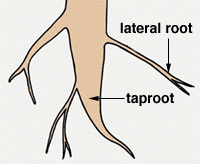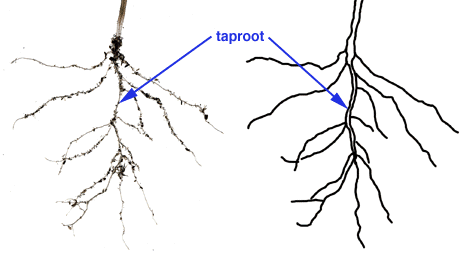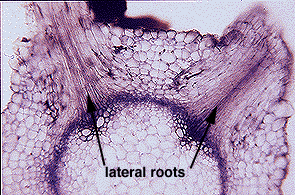|
Plants generally conform to one of two root systems, a taproot system or a fibrous root system.
|
|
|
A taproot system, generally found in dicotyledons, is made up of a central, large root that is called the taproot. The taproot is larger in diamater than the lateral roots. Lateral roots, which originate from the pericycle, branch off from the taproot, and subsequent lateral roots can branch off other lateral roots. Taproots generally grow more deeply into the soil than do fibrous roots (Esau 1976).
|

|
|

|
Unlike the taproot system, the fibrous root system is made up of thin, stringy roots that all have about the same diameter. These roots branch several times and form a complex mat under the plant that binds to the upper soil layers. Fibrous roots can be found in monocots such as grasses (Esau 1976).
|
|
|
The tomato plant can have a fibrous root system or a taproot system depending on how the plant was grown. If the plant is grown from a seed, the plant will exhibit taproot organization, as shown in the photograph and drawing below. When the plant is grown from cuttings, a fibrous root system will form.
|

|



